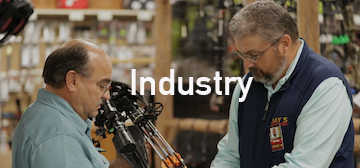If you decide to move forward with incorporating spokespeople, influencers and/or pro staff members into your marketing plan, make it official. Kelley recommends creating contracts that protect the brand and company. The contracts should be reviewed by a lawyer; this ensures that all the legalities are in place and allows your company to remove the influencer for any reason. By outlining expectations up front, everyone understands how to move forward. A contract should include detailed accounts of what kind and how much content will be created. Kelley said you could also clarify that your brand can request specific content. For example, Kelley said, this could include four posts per month tagged with your brand and the delivery of 50 high-quality photos per year and 10 videos per year.
Don’t base your selection on follower numbers alone. It’s more important that influencers are engaged and have the right following. They also need to represent your target audience. What’s even better is if they can reach an audience that you don’t reach with other marketing tactics.
Ask influencers for a summary of their social media statistics. This will include reach, impressions, engagement, comments and shares.
“I highly recommend setting benchmarks so that you can adapt your influencer strategy should a specific influencer not be performing as expected,” Kelley said.
When you invite people to represent your brand, especially if they are paid or sponsored spokespeople, influencers and pro staff, they become a visible representation of you. Their actions have the potential to have a major impact on your image, for good and bad. That’s why it’s vital to thoroughly vet everyone you work with professionally. Kelley said the three biggest red flags are when partners refuse to share performance data, don’t meet content deliverables, and post content with the potential to negatively impact the brand. That final red flag is one that has potentially devastating effects.
“Over the last several years, there are countless examples of brands having to separate from influencers due to the influencer’s personal opinions or stances,” Kelley said. “I have seen influencers post content which compromised brands and required partial activation of crisis communication plans.”
Diligently monitor influencer channels to ensure that no comments or photos are being posted that could compromise your brand. Kelley recommends creating a welcome packet that educates partners. It should include information about your brand history, products, social handles, hashtags, topics to talk about and topics to avoid.
Just because it’s trendy doesn’t mean it’s right for your company. These types of partnerships require trust.
“Influencers are not a cure-all, but when activated well they can be a strong driver for your business. Simple takeaway, make sure there’s a purpose to the program before you invest,” Kelley said.
Click here to find all active MyATA service providers and learn how they can help you strengthen your business. You can also contact the ATA business, membership and Trade Show office at (507) 233-8130.





